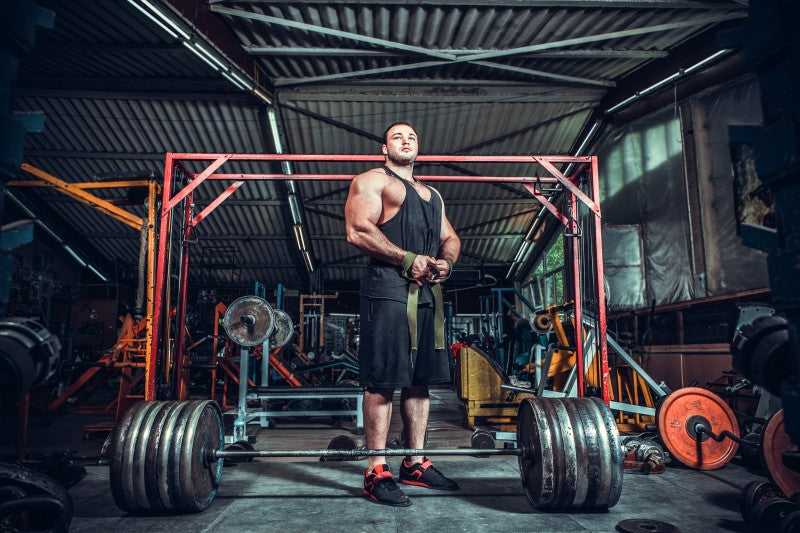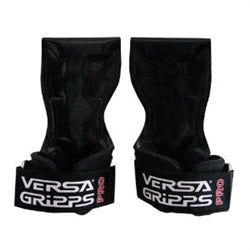The deadlift is the king of pull exercises involving the hip hinge. This brutal compound exercise trains muscles from head-to-toe. Bodybuilders train the deadlift to build muscular spinae erectors, beastly trapezius muscles, and build overall back thickness through isometric contraction.
Powerlifters train the deadlift to improve their
big 3 total. Some of the most elite powerlifters can deadlift over 1,000 pounds, a feat that takes patience, strength, and balls of steel. Strongmen will notice significant carryover from the
deadlift to activities requiring isometric back contraction and grip strength.
Even Olympic lifters and CrossFit athletes will benefit from the deadlift?s ability to build raw strength and power off the floor.
Related: 4 Powerful Ways to Fix a Stalled DeadliftIf you've ever tried to train the conventional deadlift with increased volume, frequency, and/or intensity then you may have quickly found yourself with significant central nervous system (CNS) and muscle fatigue. A full-range-of-motion deadlift is one of the most taxing exercises on the body.
If fatigue is left unmanaged, it can lead to poor movement patterns and serious injury. If you still want to train the deadlift movement multiple times per week then you absolutely must incorporate variations and ensure your recovery protocol is on-point.
Take a video of your form and carefully analyze weaknesses and sticking points. Ensure each exercise variation you incorporate in to your routine has a purpose. While I am a fan of performing my ?pet? exercises, you should also include variations that you are not so good with but will provide significant benefit.
This article provides five exercise variations that improve different lagging muscles and aspects of the lift based on where you struggle most.

Build Bigger Deadlift Strength
Romanian Deadlift ? 3 to 5 sets of 8 to 12 reps
Romanian deadlifts are my favorite deadlift variation for building thick hamstrings and a strong lower back without as much strain on the central nervous system compared to traditional deadlifts.
Set up for the movement exactly as you would for a conventional deadlift ? feet roughly hip width apart with your toes pointed slightly out and a shoulder width pronated (palms facing you) grip. If the bar is beginning on the floor, then perform a conventional deadlift but stop at the lockout position. Otherwise, remove the bar from the pins and start in a fully upright position.
Brace your abdominals for impact and slowly lower the bar down your upper thighs while also slightly pushing your hips backwards. You will notice a slight bend in the knees during the descent. Continue lowering the barbell until it passes your knees and you feel a nice stretch in the hamstrings. Hold this position for one second and then push through your heels and thrust your hips forward until you return to the starting position.
Unlike a conventional deadlift the barbell will not touch the ground in between every rep and your hips should only move backwards rather than downwards. Use straps if your grip fatigues before your hamstrings.
Paused Deadlift ? 3 to 5 sets of 4 to 6 reps
The paused deadlift variation is perfect for directly targeting sticking points as well as training positions in which you tend to lose tightness. Start with between 30 and 50% of your one repetition maximum for this lift but be prepared to be humbled.
Take your preferred deadlift stance and grip ? for most this will be a hip-width stance and shoulder width grip but you may also take a wide (sumo) stance and shoulder width grip. Take a deep breath, brace your abdominals for impact, lean your hip back slightly and push through your heels until you feel the bar gradually pull off the floor. If you struggle to maintain this start position, then pause the lift for one to five seconds when the bar is just off the floor.
Otherwise continue performing the repetition and stopping when the bar is slightly below, just at, or slightly above the knees. This is another common sticking point as many trainees preemptively shoot their hips upward before the bar clears the knees.
Lockout the rep and slowly lower back to the start position. If you want to take paused deadlifts to the next level, then incorporate multiple pauses during the ascent and descent of the bar. I love incorporating paused deadlifts during my warm-up sets as well as during lower intensity back-off sets.
If you struggle to maintain tightness, then paused deadlifts will quickly fix that issue as well as leave you with some noticeable abdominal soreness.
Rack Pull ? 3 to 5 sets of 6 to 8 reps
If you see someone in the gym performing deadlifts starting at or slightly below the knee with 4, 5, or more plates per side, then chances are they have imposing forearm, trapezius, and upper back muscles. This exercise variation is commonly referred to as the rack pull or deadlift lockout.
Set up for the movement by placing blocks on the floor or support pins in the squat rack so that the barbell is at or slightly below knee height. Whereas other deadlift variations increase the time under tension through increased range of motion, rack pulls shorten the range motion which means you'll potentially be able to use loads above your conventional deadlift one repetition maximum.
[caption id="attachment_18565" align="alignright" width="250"]
 Click here
Click here to order the ultimate lifting straps - Versa Gripps.[/caption]
After adding the desired weight, take your preferred deadlift stance and grip. Since you?re using weights close to or above your one repetition maximum I would advise using high quality lifting straps so that your grip does not give out before your back. Even elite bodybuilders and powerlifters use straps on certain exercises.
Once you?re in position, brace your abdominals for impact, slightly lower your hips, and push through your heels. You should feel your glutes and upper back engage immediately. Push your hips forward and upper back backwards until you lock out the lift and are standing upright. Hold for one to three seconds before lowering to the start position.
The rack pull is a great movement for those struggling to lock out the deadlift as well as though looking increase back thickness and pack mass on to the upper back.
Power Clean ? 3 to 5 sets of 3 to 5 reps
The power clean is the best Olympic lifting variation for building explosiveness and speed off the floor as well as a beefy upper back without being overly technical to perform. If you have inflexible ankles or want to optimize your Olympic lifts, then I suggest purchasing a pair of high quality rubber-sole Olympic weightlifting shoes with a raised heel.
For those new to performing the power clean, load a barbell with approximately 30% of your deadlift one repetition maximum. Experienced trainees may load the bar with 50% of their one repetition maximum.
Approach the bar and take a hip width or slightly wider stance with your toes pointed outwards at a 30 to 45-degree ankle. Take a pronated grip, preferably with a hook grip (fingers wrapped over the thumb) slightly wider than your stance. Initiate the movement by taking a deep breath, bracing your abdominals for impact, lowering your hips, and bending your knees. Your hips should not come close to parallel as this puts you in a suboptimal start position.
Once in the start position, initiate the movement by screwing your ankles to the floor, pushing your knees outwards, and pushing through your heels. Your hips rather than your arms should pull the bar upwards off the ground. Continue pulling upwards until the bar clears your knees and then rapidly push your hips forward.
Simultaneously internally rotate your shoulders and pull your elbows towards the ceiling. The bar should be primarily pulled upward by the force generated from your hips rather than arms. Continue pulling upwards until you lose momentum. At this point your elbows should be at or above shoulder height. Your hips and ankles should also be fully extended.
Quickly whip your elbows underneath the bar and perform no more than a quarter squat to catch the bar on your deltoid muscles. Recover from the quarter squat and stand up straight to complete the lift. This movement should be fluid and explosive. I would advise against using straps as your wrist may get caught in a compromised position if you incorrectly catch the bar.
Whenever my power clean increases, my deadlift speed off the floor also increases.
Hip Thrust ? 3 to 4 sets of 12 to 15 reps
Round and powerful glutes are attractive and functional for both genders. Developed glute muscles are critical for locking out the deadlift as well as maintaining a bulletproof posterior chain. While variations of the squat, deadlift, and lunge will engage your glute muscles, hip thrusts are hands-down the best exercise for building and strengthening the glute muscles.
Set up for the movement by finding a flat bench, sitting on the floor, and situating your upper back so that the shoulder blades are resting on or slightly above one long side of the bench pad. Your legs should be slightly outside shoulder width apart, knees bent, and feet flat on the floor. You can place your hands across your chest, on your hips, or extended out in front of you.
Initiate the movement by screwing your ankles in to the floor, squeezing your glutes, and pushing through your heels. Use your glutes to push your hips upwards until they?re in-line with your knees and shoulders. Your shins should be perpendicular to the floor. Throughout the movement ensure your upper back remains in-contact with the bench and you push your knees outwards so that your glutes are the primary movers during this exercises.
Squeeze your glutes at the top position for one to five seconds before slowly lowering to the start position. Increase the intensity of this exercise by resting dumbbells or a loaded barbell across your hips. You may need to wrap the bar with a squat pad or use a yoga mat to increase the comfort of the movement.
What are your favorite exercises to blast through plateaus on the conventional deadlift? Let me know in the comments below!


 Click here to order the ultimate lifting straps - Versa Gripps.[/caption]
Click here to order the ultimate lifting straps - Versa Gripps.[/caption]